Gaston de Foix, Duke de Nemours, was born on the 10th of December 1489 to Jean de Foix, Viscount de Narbonne, and his wife, Marie d’Orléans, in the town of Mazères, County of Foix. Gaston was also Count d’Étampes and Viscount de Narbonne, for his father died in 1500. From his father, Gaston inherited the position of governor of Dauphiné (1503-1512). Despite dying on the 11th of April 1512 at only 23, Gaston became an illustrious French military commander of the Renaissance. He received the nickname ‘The Thunderbolt of Italy’ for his successes during the Italian wars and for being a general of the French armies on the Apennine peninsula from 1511 to 1512. Gaston had outstanding military skills for his young age, and he can be considered a great general whose military style, tactics, and strategies were well ahead of his time.

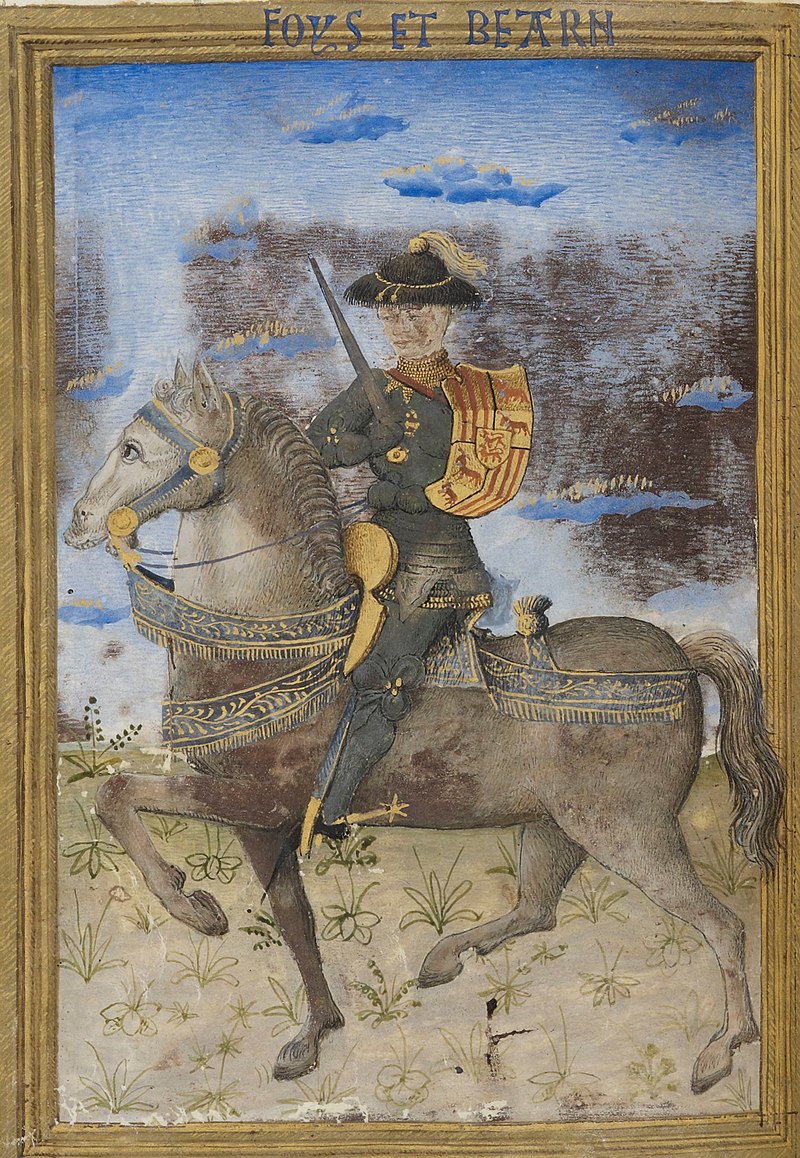
The Duke de Nemours was a maternal nephew of King Louis XII of France and had quite an impressive ancestry. Gaston’s father, Jean de Foix, was a younger son of Count Gaston IV de Foix and his wife, Queen Eleanor of Navarre, but Jean had many other siblings, who were Gaston’s cousins. On his maternal side, Gaston was descended from many Navarrese rulers from the House of Trastámara. Gaston also had in his ancestry tree Navarrese monarchs from most of noble houses that had ruled Navarre, many of which were connected by blood ties: the Houses of Capet, of Évreux, of Foix, and of Albret. Gaston’s maternal grandmother, Blanche I of Navarre, belonged to the House of Évreux, a cadet branch of the French Capetian dynasty.
On paternal side, we find among Gaston’s ancestors Charles d’Albret, Constable of France and general of the French army, who was heroically killed at the Battle of Agincourt of 1415, which was a devastating defeat of the French during the Lancastrian phase of the Hundred Years’ War. Despite the failure of the French, Albret was one of the most sensible and most experienced commanders at the time. One of Gaston’s paternal ancestors was Archambaud de Grailly (1330-1412), Viscount de Castillon and de Gruson and Count de Foix – this man had once been an ally of Gaston’s another ancestor with a tragic fate – Louis de Valois, a premier French prince of the blood and the Duke d’Orléans who had been brutally assassinated in Paris in 1407.
Gaston’s mother was Marie d’Orléans, the only sister of Louis XII of France. She was the oldest daughter of Charles, Duke d’Orléans (an outstanding medieval prince-poet!), and his third wife, Marie of Cleves. Charles d’Orléans spent about 30 years in English captivity. Through female bloodlines, Gaston was a descendant of Prince Louis, Duke d’Orléans, and Valentina Visconti. Through his mother, he was also descended from King Charles V of France known as the Wise (le Sage), King Jean II of France known as the Good (le Bon), King Philippe VI of France called the Fortunate (le Fortune), and Count Charles de Valois, who was a younger brother and councilor of King Philippe IV the Fair. Gaston’s origins can be traced back to Philippe III of France the Bold (le Hardi) and further down the Capetian line to Hugh Capet, then down to Charlemagne.
Gaston’s ancestry incorporated numerous Valois and Capetian monarchs. He was a cousin multiple times over to the ruling Valois dynasty of France, including a cousin to Louis XII’s heir – King François I of France and François’ sister, Marguerite d’Angoulême. Gaston’s maternal grandfather was King John II of Aragon from the Trastámara family, so he was a cousin to the infamous Catholic monarch King Ferdinand II of Aragon, or Fernando de Aragón ‘El Católico.’ Gaston had only one older sister – Germaine de Foix, who became the second wife of Ferdinand of Aragon after the death of Queen Isabella of Castile. Looking at the ancestry trees of notable people, you discover that they were related in one way or another due to dynastic intermarriages. Born healthy, robust, and clever, Gaston nevertheless inherited the inbred heritage of his ancestors, including that of the Foix family, where cousins often married other Foix cousins.
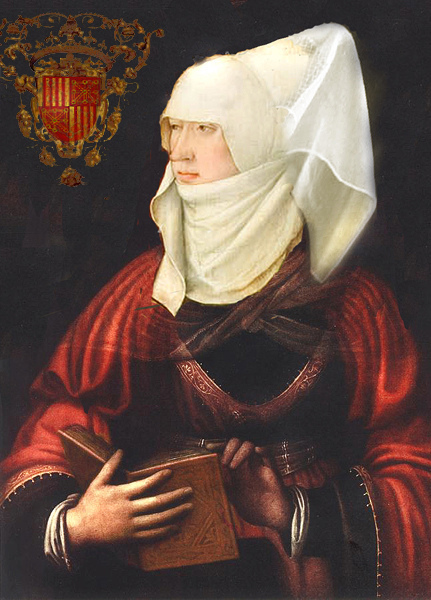
Looking at Gaston’s military career, you are most impressed. It was so short: he spent only 6 months in Italy after Louis XII had given him the command of the French royal armies. From a military standpoint, Gaston was notable for his fast forced marches, his quick adaptations to the maneuverings of adversaries, and for his sudden, foolhardy, and effective offences. He displayed an excellent maneuvering talent during the months of his heroic escapades in Italy, and he could be ahead of the French greatest strategists such as Henri de La Tour d’Auvergne, Viscount de Turenne, and perhaps even Napoleon. Gaston’s courage was unprecedented on the battlefield.
These key qualities distinguished his campaign against the Holy League in the War of the League of Cambrai. In October 1511, Pope Julius II allied with King Ferdinand II of Aragon and Venice with the goal to regain the lands taken from the Papacy by the French and driving them out of Italy. While in the Duchy of Milan, Gaston faced the threat of invasion from the north from the hired Swiss mercenaries, the Papal-Aragonese troops from the south, and Venice, the ally of the Pope, from the east. Thanks to Gaston, the French captured Bologna in May 1511 and scattered the enemy armies, which retreated to Ravenna. Gaston did not attack the Swiss and used the tactic of anticipation: he reinforced Bologna, which was under renewed attack from the Papal army and was defeated, and just as he calculated, the Swiss retreated as winter came.
Gaston avoided the perilous invasion of Duchy of Milan by doing so. At the time, Milan was temporarily held by the French. Although he fought for his uncle, King Louis, Gaston himself had a claim to Milan: Louis and he were both descended from Valentina Visconti, whose father, Gian Galeazzo Visconti, Duke of Milan, mentioned in her marriage contract to Louis d’Orléans that if the legitimate Visconti male line died out, Valentina’s descendants would have to the right to claim the duchy. The difference was that the King of France’s claim was more senior and came from the male bloodline as Louis XII was descended from Charles d’Orléans, Gaston’s relative.
From Milan and Boulogne, Gaston de Foix marched with his large army through the snow to Ravenna and threatened to besiege it. The French army consisted of 23,000 soldiers, 8,500 of which were German landsknechte (German mercenaries who used pike and shot formations), and about 60 artillery pieces. Ramón de Cardona, the Viceroy of Naples, commanded a joint Papal-Spanish army, which included approximately 16,000 troops and 30 artillery pieces; the garrison of Ravenna counted about 5,000 men. Gaston and Cardona exchanged formal invitations for battle.
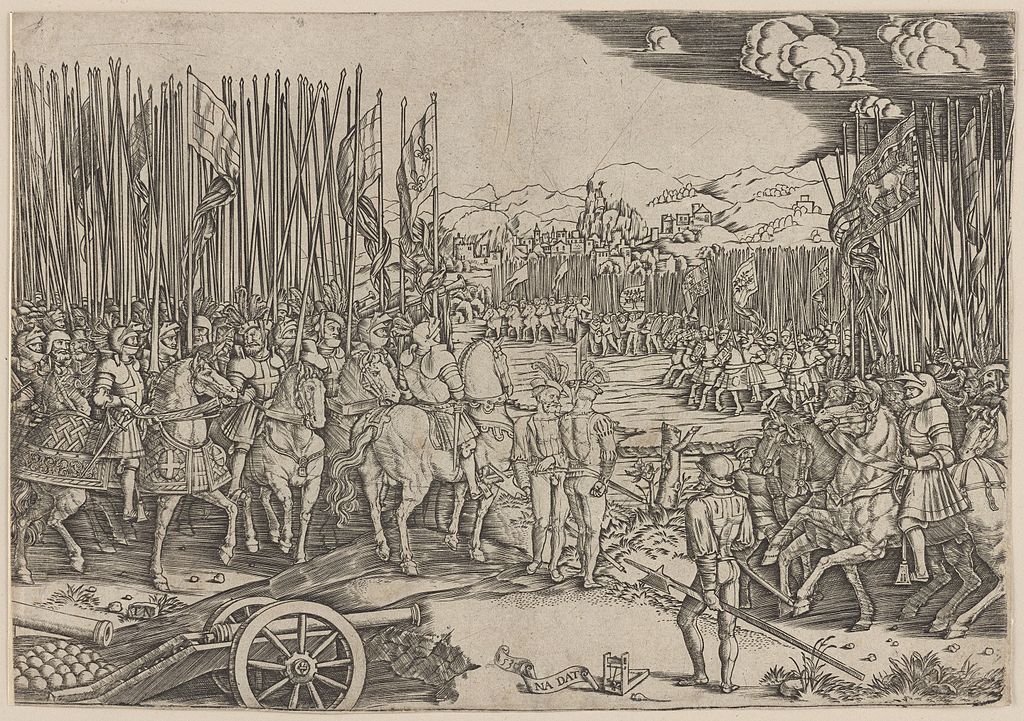
The Battle of Ravenna was fought on the 11th of April 1512. Naturally protected by the Ronco River, the Spaniards enjoyed relative security also thanks to the strong entrenchments and obstacles prepared by the famous Navarrese military engineer Pedro Navarro. Having left about 2,000 soldiers to defend Ravenna and his back, Gaston moved with his forces forward, crossed the stream between Ravenna and the Spanish camp, and formed a tactical semicircle around the foe entrenchments. Upon Gaston’s orders, the artillery began firing the Spanish position with deadly accuracy, but the Spanish infantry was well protected. That is why the Battle of Ravenna is associated with a full-scale artillery duel that lasted more than 2 hours. When the Spanish cavalry advanced towards them, the French deflected the attack and launched a counter-offensive.
Other French commanders participated in the battle: Jacques de La Palice; Thomas Bohier, Sénéchal of Normandy; Odet de Foix, Viscount de Lautrec and Gaston’s cousin; and Pierre Terrail, Seigneur de Bayard known as Chevalier de Bayard. The charges of Gaston’s cavalry resulted in the fierce struggle between the landsknechts and the Spanish in the entrenchments. Having predicted it in advance, Gaston sent several canons behind the enemy lines, which started firing lethal missiles on them. The Spaniards began to hastily retreat and suffered huge casualties. It seemed to be the compete victory of the French who commenced pursuing the enemy. It was when Gaston, who was at the head of the cavalry charge, met his end: his destrier stumbled, throwing him down to the ground, and the general was shot many times. The French lost about 9,000 men, while the Spanish were literally wiped out; Pedro Navarro was taken prisoner.
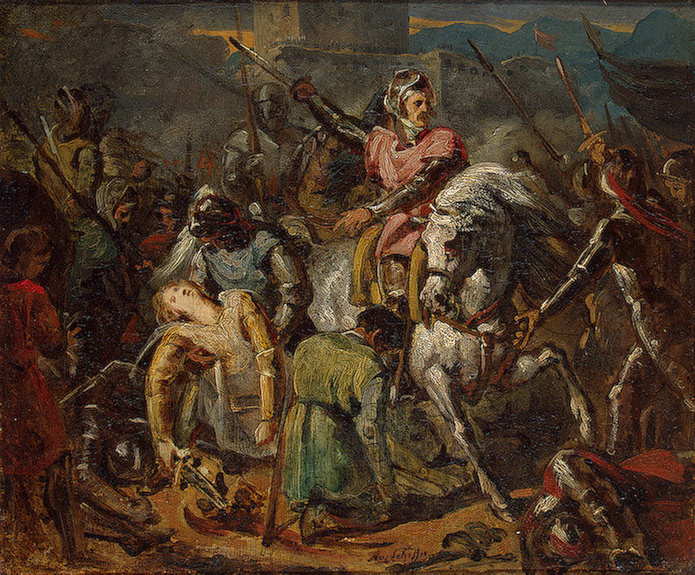
Albert Malet (a famous French historian of the 19-20th centuries, and author of scholarly textbooks) wrote of Gaston de Foix in his book ‘History of France’:
“Never people made more defense than the Spaniards who, having neither arms nor whole legs, bit their enemies. 16,000 men were killed. Gaston received 18 wounds: from the chin to the neck he had 14 or 15, and by that he showed his great courage of a prince.”

Despite the victory at Ravenna, Gaston’s sudden demise weakened the French in northern Italy. Many soldiers died. His passing was tragic not only for the French power, but also for Queen Catherine of Navarre and her husband, King Jean III of Navarre, the rulers of the small Pyrenean realm. King Ferdinand of Aragon, whose forces Gaston vanquished at Ravenna, inherited Gaston’s claim to Navarre through his wife, Germaine de Foix. The power-hungry and ambitious Ferdinand used it as a pre-text for his invasion of Navarre in 1512. The outcome was the Spanish conquest of the Iberian part of Navarre and many problems with which King Henri II of Navarre, second husband of Marguerite d’Angoulême, would have to deal with for a long time.
King Louis XII of France was shocked with his young nephew’s demise. Louis mourned for Gaston not as a politician but as an uncle, and he ordered many Masses for his nephew’s soul. We know little about Gaston’s personal life, but according to some chronicles, Gaston de Foix was the first love of Marguerite d’Angoulême, who would later become Marguerite of Navarre and would be commonly known by this name. Marguerite responded to Gaston’s feelings, and the couple was romantically involved for some time; perhaps they exchanged secret letters with poems and had clandestine strolls in the gardens. One chronicle claims that Gaston and Marguerite asked King Louis for the permission to marry, but the monarch had other plans for her.
In 1509, Marguerite was married off to Charles IV, Duke d’Alençon, who was absolutely incompatible with her. Gaston appeared to move on and took several mistresses, but we know that Marguerite wept in her chambers when the tragic news of his death arrived in France. It was also a personal loss for François d’Angoulême, at the time Duke de Valois, who had a close amicable relationship with his and Margot’s cousin Gaston. On the 21st of February, 1513, 10 months after Gaston de Foix had perished in the hour of his victory, Pope Julius II passed away in Rome at the very moment when he seemed to be able to finally enjoy the triumph of his policy.
Gaston de Foix was a brilliant commander whom King François I of France, with his grand dreams to restore his ancestress Valentina’s Milanese heritage, would desperately have needed. Had Gaston survived and served François I after the death of Louis XII, François de Valois would have had a loyal friend and an outstanding strategist in Italy and in his other battles. In my opinion, Gaston’s talent in the military art surpassed that of Anne de Montmorency, who would be made Constable of France, and that of Claude de Lorraine, Duke de Guise. If Gaston had been alive, it would have been far easier for King François to conquer and hold the city of Milan.
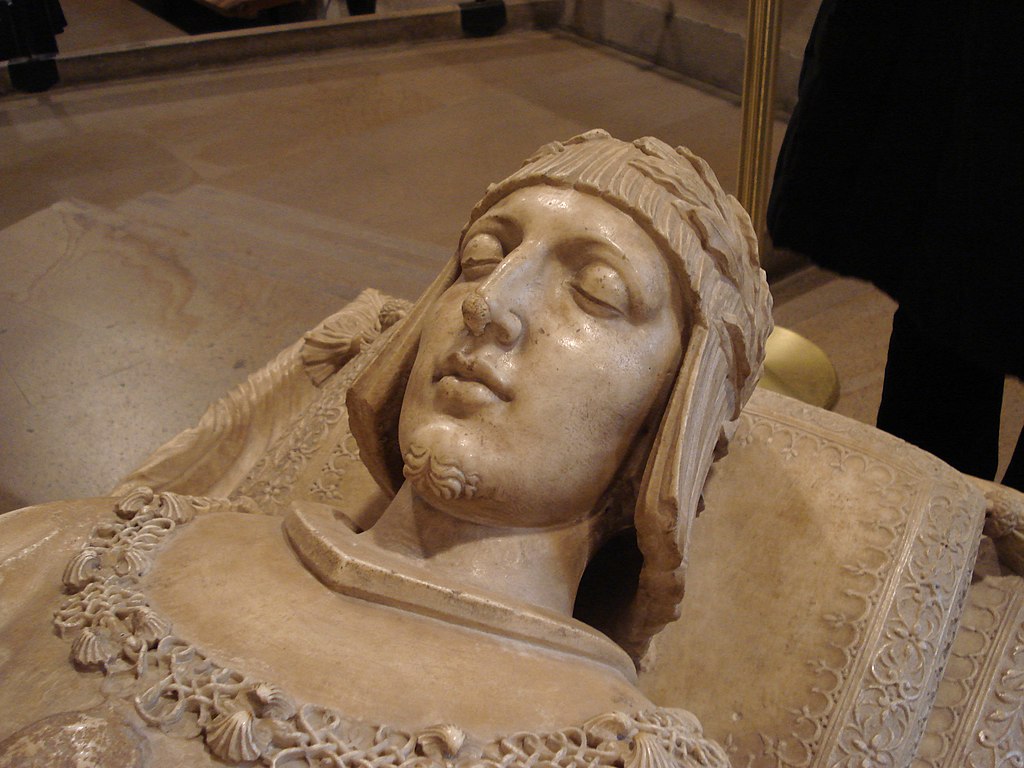
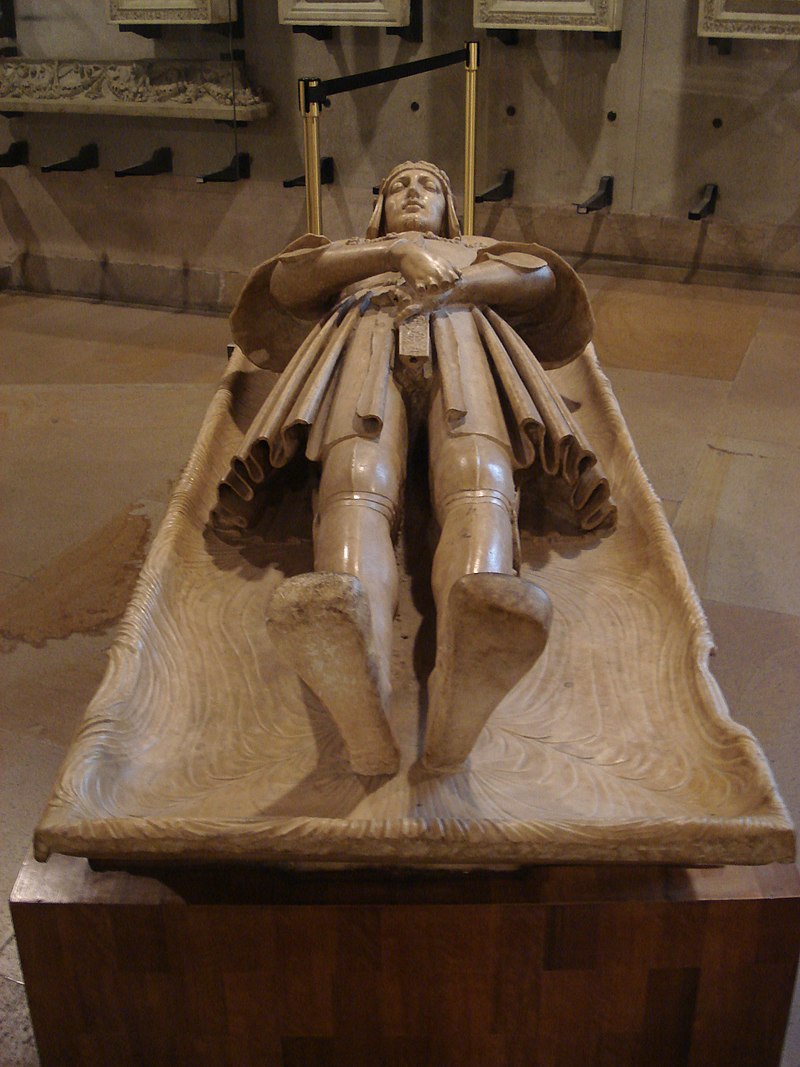
After the battle, Gaston’s corpse was placed in Duomo di Milano, or Cathedral of Milan, surrounded by his coat-of-arms and Valois standards. Yet, the French were forced to leave Milan. Matthieu Schiner, Cardinal de Sion loyal to the kingdom of Aragon, had the remains moved to the Church of Santa Marta. In 1515, after the recapture of the city by the French, King François I of France commissioned an elaborate tomb for Gaston from the workshop of Agostino Busti, which was almost completed in 1522. However, Milan was lost again, so the construction was abandoned. Yet, tomb remains a prominent work of the French Renaissance art, with relief panels of his campaigns around the base of the sarcophagus, surmounted by a more traditional recumbent effigy. Today it can be seen with Gaston’s statue at Castello Sforzesco, or Sforza Castle in Milan.
All images are in the public domain.
Text © 2021 Olivia Longueville

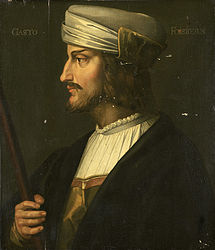




Hello~ I came upon this fascinating article while researching my family tree! According to several ancestry websites Gaston de Foix Duke de Nemours could be my 11th great grandfather. Was he actually married to Marie de Bourbon~ producing a son? I would love to know if this is in fact documented. Great writing~ I will subscribe!
Cheers~
Diane Foshee
Hello Diane!
As far as I know, Gaston de Foix Duke de Nemours had no children, and he was not married. Maybe another Gaston is meant, for the Foix family was quite large.
I’m glad you liked the article.